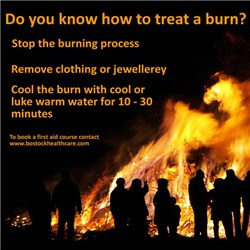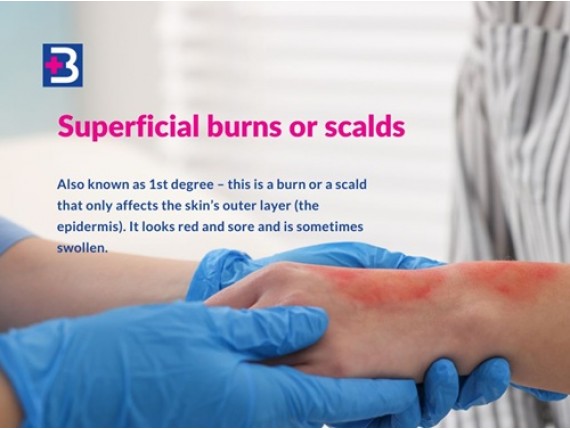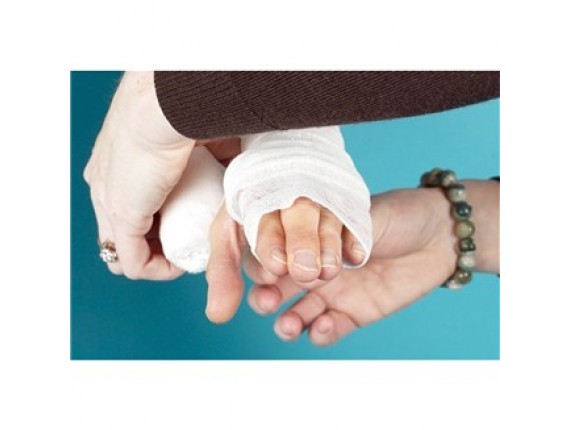First Aid for Burns

Burns can be very painful, as well as dangerous and so appropriate first aid treatment should be given as soon as possible. This will limit the amount of damage to the casualty's skin.
- Stop the burning process quickly. This may mean removing the
casualty from the area or putting out the flames. Be careful not to put
yourself at risk.
- Remove any clothing or jewellery near the burn. Don't try to
remove anything that is stuck to the burnt skin.
- Cool the burn with cool or lukewarm water for 10 to 30
minutes. Start cooling as soon as possible. Never use ice, iced water or any
creams or greasy substances such as butter.
- Keep the casualty warm. Use a blanket or layers of clothing,
but avoid putting them on or near the injured area.
- Cover the burn with cling film or a burns dressing.
When to go to hospital
Once you have taken these steps, you will need to decide
whether further medical treatment is necessary. Go to a hospital A&E
department for:
- large or deep burns – any burn bigger than the casualties
hand
- full thickness burns of all sizes – with white or charred
skin
- partial thickness burns on the face, hands, arms, feet, legs
or genitals – with blisters
- all chemical and electrical burns
- you are not sure
Also get medical help straight away if the person with the
burn:
- has other injuries that need treating
- is going into shock
- is pregnant
- is over 60 years of age
- is under five years of age
- has a medical condition such as heart, lung or liver
disease, or diabetes
- has a weakened immune system, for example because of HIV or
AIDS, or they're having chemotherapy for cancer
If someone has breathed in smoke or fumes, they should also
seek medical attention.
Electrical burns
Caused by heat that is generated by an electrical current
electrical burns may not look serious, but they can be very damaging as there
may also be internal burns. Someone who has an electrical burn should seek
immediate medical attention at an A&E department.
If the person has been injured by a low-voltage source such
as a domestic electricity supply, safely switch off the power supply or remove
the person from the electrical source using a non-conductive material. Do not
approach a person who is connected to a high-voltage source (1,000 volts or
more).
Chemical burns
Chemical burns can be very damaging and require immediate
medical attention at an A&E department.
If possible, find out what chemical caused the burn and tell
the healthcare professionals at A&E. If you are helping someone else, wear
appropriate protective clothing, then:
- Make the area safe
- remove any clothing on the person that has the chemical on
it
- if the chemical is dry, brush it off their skin
- use running water to remove any traces of the chemical from
the burnt area
Call 999/112 for emergency help
Make sure that you have a Burns First Aid Kit in your
workplace. Our burns first aid posters are a great reference for your
employees.


